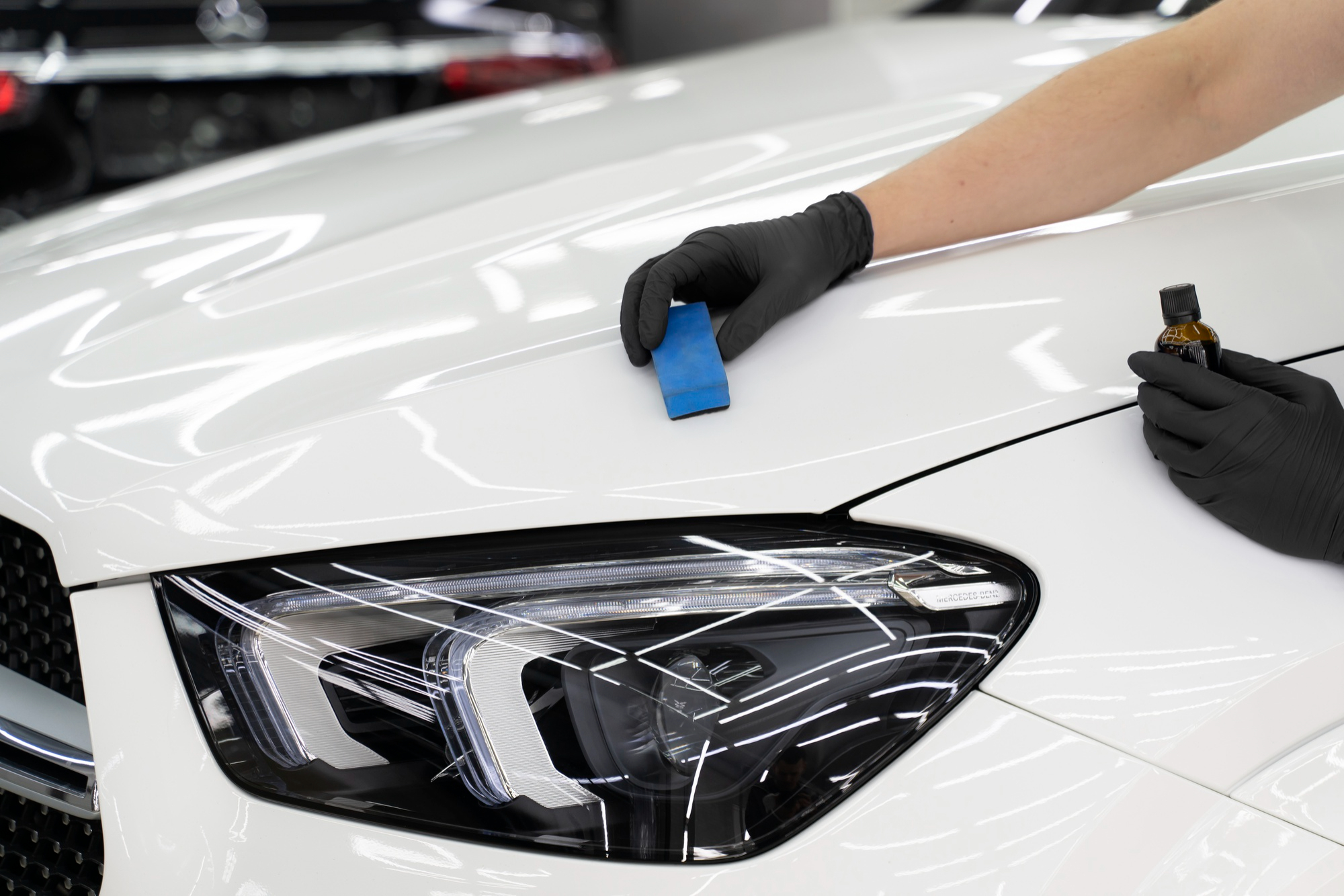Ceramic Coatings San Jose: Improve and Safeguard Your Lorry's Complete
Ceramic Coatings San Jose: Improve and Safeguard Your Lorry's Complete
Blog Article
Unveiling the Science Behind Ceramic Coatings: Just How Does It Work and Why Is It Superior to Traditional Choices?
Ceramic finishes have been acquiring popularity in numerous industries for their remarkable efficiency and durability. Understanding just how ceramic layers work and why they outshine standard alternatives is important for those seeking to boost the durability and durability of their products.
The Chemistry of Ceramic Coatings
In comprehending ceramic coverings, diving into the detailed chemistry behind their make-up is essential for understanding their functionality and longevity. Ceramic coverings are primarily made up of silicon dioxide (SiO2), which forms a safety and strong layer when related to different surface areas. This chemical structure supplies extraordinary resistance to warm, chemicals, and deterioration, making ceramic coatings highly searched for for a wide variety of applications.
The chemistry behind ceramic finishings includes the development of covalent bonds in between silicon and oxygen atoms, developing a rigid network that boosts the finishing's toughness and sturdiness. In addition, the existence of other elements such as titanium, aluminum, and zirconium more boosts the coating's homes, using raised firmness and adhesion to surfaces.
Recognizing the chemical structure of ceramic coverings permits for the modification of solutions to match details requirements, whether it be for automobile, industrial, or residential purposes. By using the power of chemistry, ceramic layers remain to lead the way for superior security and performance in numerous markets.
Advantages of Ceramic Coatings

As an outcome, ceramic layers make cleansing and keeping surfaces much easier and less time-consuming. On the whole, the plethora of benefits used by ceramic finishings make them a premium alternative contrasted to traditional finishing methods.
How Ceramic Coatings Bond
Ceramic finishes bond to surfaces through a process that entails molecular bond and chemical interactions. When a ceramic finish is applied to a surface area, it develops a solid bond by chemically adhering to the surface at a molecular level.
Moreover, the chemical communications in between the ceramic finish and the surface area better boost the bond. ceramic coatings san jose. These interactions enable the ceramic coating to create a seamless and continual layer externally, supplying excellent security and toughness. Unlike traditional finishes that might remain on the surface area without fully bonding, ceramic coatings develop an irreversible bond that is immune to chemicals, UV rays, and rough ecological conditions

Essentially, the bonding device of ceramic finishings guarantees a effective and resilient safety layer that outmatches typical covering alternatives. This superior bond adds to the sturdiness, scrape resistance, and long life of ceramic coverings, making them a recommended selection for different applications.
Resilience of Ceramic Coatings
The outstanding long life of ceramic coatings originates from their robust molecular bond and chemical interactions with surface areas, ensuring a resilient protective layer that goes beyond standard covering alternatives. Once used, ceramic finishings form a solid bond with the substratum, developing a resistant barrier against various ecological stressors such as UV radiation, chemicals, and abrasions. This bond is so safe that it can withstand the roughness of day-to-day usage without deteriorating or deteriorating quickly.
Unlike traditional coverings that may degrade over time, ceramic coatings keep their honesty for important source an extensive duration, offering long-lasting defense for the underlying surface. On the whole, the outstanding longevity of ceramic finishings makes them an exceptional selection for protecting a large variety of surfaces in different applications.
Ceramic Coatings Vs. Traditional Options
In contrast to standard finishing approaches, ceramic finishes offer an unique blend of longevity and safety capabilities that set them apart in various surface defense applications. Conventional alternatives such as wax or sealants give a short-lived layer of security that can diminish rapidly, calling for regular reapplication. On the various other hand, ceramic coatings develop a solid bond with the surface, producing a semi-permanent or permanent obstacle that is very immune to abrasion, chemicals, UV rays, and extreme temperature levels.
Furthermore, ceramic finishes supply premium hydrophobic residential or commercial properties contrasted to standard layers. The hydrophobic nature of ceramic layers causes water to bead up and roll off the surface, bring dirt and contaminants with it. This self-cleaning impact helps to preserve the surface area's cleanliness and gloss for extensive periods, minimizing the need for constant maintenance.
Furthermore, ceramic finishes have a thicker layer contrasted to traditional alternatives, supplying boosted scratch resistance and protection against minor effects. This resilience guarantees long-lasting efficiency and aids maintain the visual allure of the treated surface for an extended duration.
Final Thought
To conclude, the science behind ceramic finishings hinges on their chemical make-up and bonding buildings, making them above typical choices. The benefits of ceramic coverings consist of boosted resilience and security for surface areas. By understanding how ceramic coatings work and their benefits over typical choices, one can make educated decisions when taking into consideration finishing options for different applications.
Unlike traditional coverings that may sit on the surface area without totally bonding, ceramic coverings create a long-term bond that Visit Your URL is immune to chemicals, UV rays, and severe ecological problems.
The remarkable long life of ceramic finishes stems from their robust molecular attachment and review chemical communications with surfaces, ensuring a durable protective layer that surpasses standard finish options.Unlike conventional coverings that might deteriorate over time, ceramic finishings preserve their honesty for an extensive period, offering resilient protection for the underlying surface.In contrast to conventional finish techniques, ceramic finishes supply a distinct mix of sturdiness and safety capabilities that set them apart in different surface protection applications. By understanding how ceramic layers work and their benefits over typical alternatives, one can make educated choices when taking into consideration finish alternatives for different applications.
Report this page